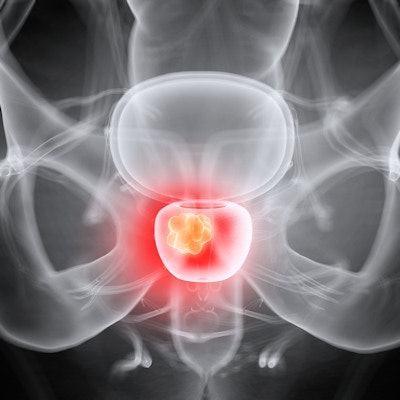
While white patients have benefited from multiparametric MRI (mpMRI) to detect and assess prostate cancer, the modality's efficacy within the African American community is quite deficient by comparison, according to a study published May 2 in International Urology and Nephrology.
mpMRI has proven effective in diagnosing high-grade prostate cancer to a similar extent in both patient groups. But the modality's negative predictive value (NPV) -- a statistic that indicates the ability of a test to rule out the presence of cancer -- is lower in African American patients than it is in white patients, suggesting that mpMRI is less effective in detecting low-grade prostate cancer in black men.
This is important because it means that black men are not receiving the same survival benefit from prostate cancer detection as white men are, study co-author Dr. Kirtishri Mishra from University Hospitals Cleveland Medical Center explained to AuntMinnie.com.
"If there are modifiable factors that can be addressed between the two cohorts, then perhaps we can address this difference between the two populations," Mishra noted.
The need to accurately diagnose prostate cancer among African American men is particularly acute because of their disproportionately high chance of worse clinical outcomes, compared with white men. Studies have estimated the incidence of prostate cancer among African Americans is 60% higher, with a twofold to threefold increased risk of mortality.
"Over the last 15 years, multiparametric MRI has shown very favorable evidence that supports the modality in determining which patients have clinically significant disease and subsequently targeting those patients for biopsy for further intervention," Mishra explained.
It would figure, then, that mpMRI would be a boon for African Americans. Yet they "continue to have poorer outcomes compared with their Caucasian counterparts," according to Mishra and colleagues.
To explore this disparity, the researchers reviewed a total of 499 white patients (78%) and 139 African American patients (22%) who underwent mpMRI between January 2014 and June 2017 for suspicion of prostate cancer. The team collected data on a number of variables, including prostate-specific antigen (PSA), PSA density, body mass index, abnormal digital rectal exam status, lesion PI-RADS score, MRI prostate volume, and Gleason score. The NPV comparisons between the two groups were primarily based on the four grades of disease.
NPV results were similar between the African American cohort and the white cohort for prostate cancer at grades 3, 4, and higher, but mpMRI scored significantly lower for grades 1 and 2 prostate cancer among African American men (p = 0.001).
| Negative predictive values (NPV) for mpMRI by cancer grade | ||
| Degree of prostate cancer | NPV | |
| African American men | White men | |
| Grade 1 | 32% | 52% |
| Grade 2 | 50% | 79% |
| Grade 3 | 89% | 94% |
| Grade 4 | 96% | 98% |
"From a urological perspective and the immediate clinical application of it, we believe the best adjustment in our clinical practice is being cognizant of which of our patients are less likely to benefit from the end results of an MRI," Mishra said. "When we say that African Americans should go on active surveillance, how confidently can we say that they do not have a higher-grade disease? That is something we need to consider when we are counseling them."
Despite these results, mpMRI is "still the present and the future for prostate cancer detection," he noted. "As we add more data, we can work on those weaknesses and better select our patients for clinical intervention."



.fFmgij6Hin.png?auto=compress%2Cformat&fit=crop&h=100&q=70&w=100)




.fFmgij6Hin.png?auto=compress%2Cformat&fit=crop&h=167&q=70&w=250)











